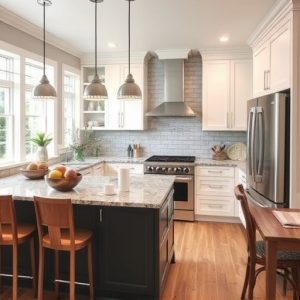Adding a kitchen island enhances space and functionality, serving as a multi-purpose workstation and dining spot. When planning, consider size, shape, material, and storage. Customizable features like built-in appliances and seating areas make islands versatile and appealing to modern households. Well-designed islands create a central gathering point for culinary activities, boosting kitchen aesthetics and home value.
Consider adding a kitchen island for a transformative upgrade. In today’s bustling kitchens, extra workspace and seating are invaluable assets. This article explores the myriad benefits of kitchen islands, from increased functionality to elevated property value through strategic renovations. We’ll guide you through the planning process, design considerations, customization options, and essential features to ensure your new island fits seamlessly into your space.
- Understanding the Benefits of Kitchen Islands
- Planning and Design Considerations for Island Installation
- Types of Kitchen Islands: Customization Options Abound
- Integrating Seating into Your Kitchen Island Design
- Enhancing Functionality with Additional Workspace Features
- The Impact of a Kitchen Renovation on Property Value
Understanding the Benefits of Kitchen Islands
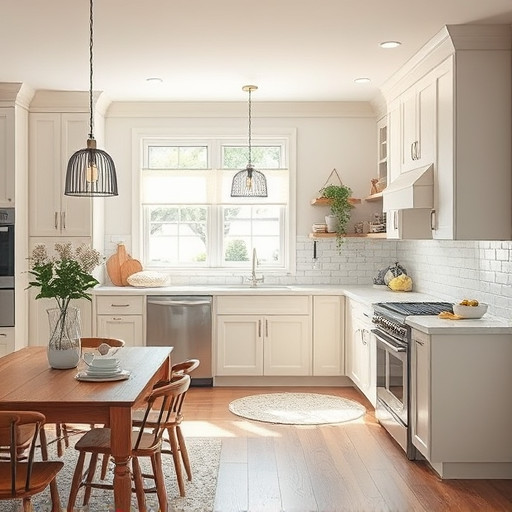
In the realm of kitchen renovations, adding a wysp is a popular and strategic move that maximizes space and enhances functionality. A kitchen island isn’t just an aesthetic addition; it serves as a multi-purpose workstation, providing extra counter space for meal preparation, a gathering spot for casual dining, and even storage solutions. This versatile element can transform the dynamic of your kitchen, making it more inviting and efficient.
By incorporating a kitchen island, you gain valuable real estate without compromising floor space. It offers a dedicated area for food prep tasks, allowing chefs-in-the-making to work comfortably side-by-side. Moreover, an island provides seating for up to four people, encouraging family meals or informal gatherings. Its versatility extends to storage, with many designs offering drawers and cabinets for keeping kitchen essentials organized and within reach.
Planning and Design Considerations for Island Installation
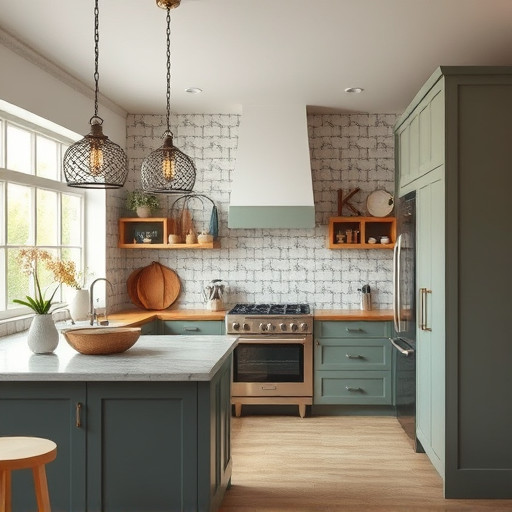
When considering a kitchen island addition as part of your kitchen renovations, careful planning and design are essential to ensure it serves both functional and aesthetic purposes. The first step is to assess your available space – measure the dimensions of your current kitchen, taking note of any obstructions like plumbing or electrical wires that could impact installation. Consider the layout of your existing appliances and worktrips to create a seamless workflow with the new island.
Design-wise, think about the island’s purpose: will it primarily serve as a workspace, a dining area, or both? Decide on the desired size, shape, and style that aligns with your kitchen’s overall aesthetic. Incorporate features like storage drawers or cabinets to maximize functionality, and consider adding seating built into the island for a multi-purpose space. Ensure smooth navigation around the island by allowing sufficient clearance between it and adjacent walls or furniture.
Types of Kitchen Islands: Customization Options Abound
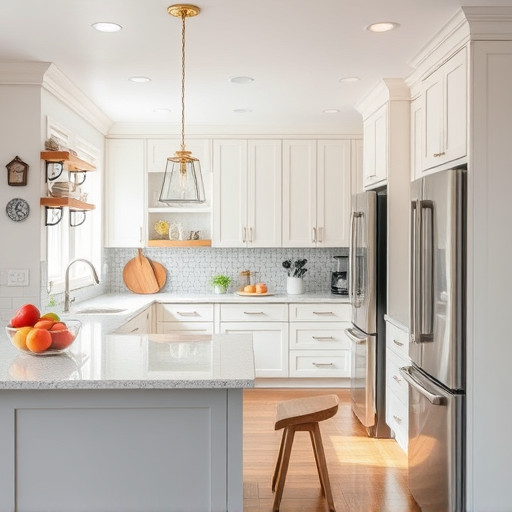
When considering a kitchen island addition as part of your kitchen renovations, the options for customization are vast. From simple, functional designs to elaborate, multi-functional centers, there’s an island style to suit every need and aesthetic. Customization starts with choosing materials—wood, stone, or even metal—that complement your existing kitchen décor. You can opt for a standard rectangle or go for something more unique, like an L-shape or curved design.
Beyond the basics, islands offer countless add-ons and features to enhance functionality. Built-in sinks, dishwashers, or cooking surfaces allow you to expand culinary capabilities. Storage options range from simple drawers and cabinets to intricate pull-out shelves and even wine racks. Some island designs incorporate seating, either on one side or both, providing a space for casual dining or additional work area. This versatility makes kitchen islands a popular choice for modern households seeking flexible, multi-purpose spaces.
Integrating Seating into Your Kitchen Island Design
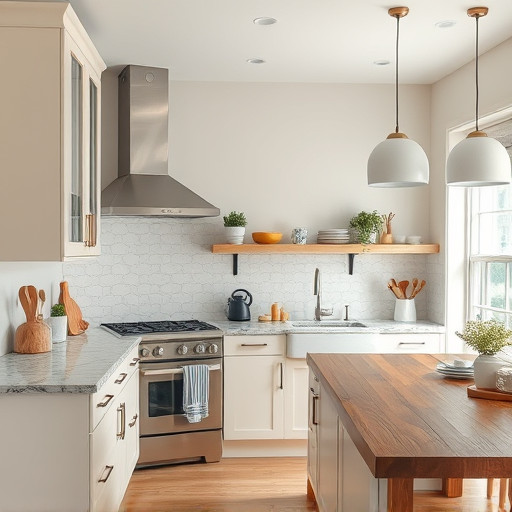
When designing a kitchen island with seating, consider both functionality and aesthetics. Integrate comfortable seating options like stools or benches that fit seamlessly into the island’s layout. The key is to create a balanced design where the seating area doesn’t overshadow the island’s primary function as an additional workspace. Think about the height of the counters and seating to ensure they’re suitable for various tasks, from meal prep to casual dining.
In kitchen renovations, optimizing space is crucial. A well-designed island with integrated seating can maximize your kitchen’s potential by providing a centralized gathering spot while still offering ample room for cooking and food preparation. This versatile design choice adds both style and practicality to your culinary space.
Enhancing Functionality with Additional Workspace Features
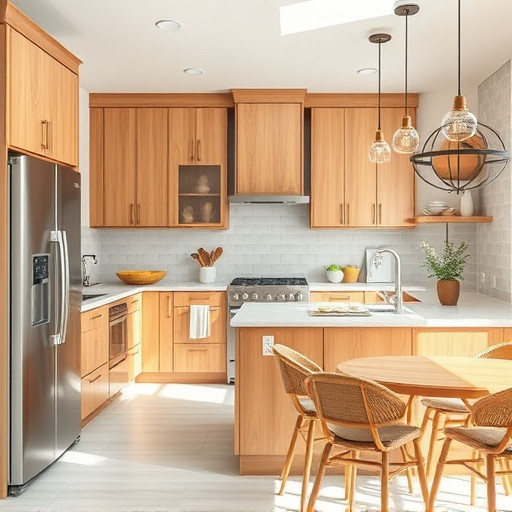
In the realm of kitchen renovations, adding a well-designed island can significantly enhance functionality and create a more dynamic space. Beyond providing extra counter area for food preparation, a kitchen island serves as a central gathering spot, offering ample seating for family and friends to enjoy meals or engage in casual conversations. Incorporating features like built-in appliances, such as a sink, stove, or even a mini-fridge, takes versatility to the next level. These additions allow for efficient meal preparation and storage, ensuring your kitchen remains a bustling hub of activity.
Additionally, smart storage solutions can be seamlessly integrated into the island design. Drawers, cabinets, and built-in baskets not only hide clutter but also make it easily accessible, contributing to an organized and stress-free cooking environment. In terms of style, a kitchen island can complement various aesthetics, from rustic wood finishes to modern sleek surfaces, ensuring it becomes a beautiful focal point that enhances the overall look and feel of your kitchen renovation.
The Impact of a Kitchen Renovation on Property Value
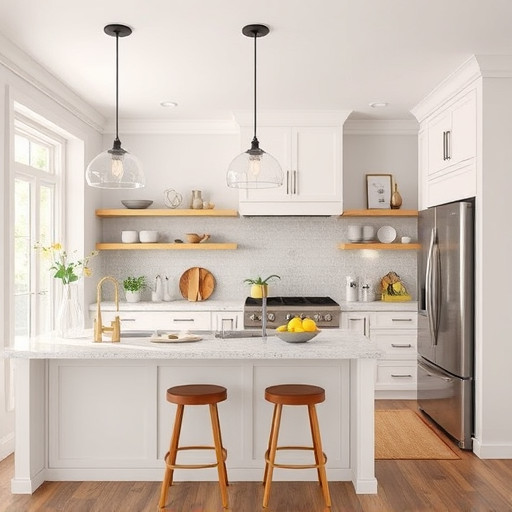
A kitchen renovation, including the addition of a kitchen island, can significantly enhance your property’s value. In today’s market, buyers increasingly seek homes with modern amenities and open-concept designs, which a renovated kitchen with an island readily provides. The island itself becomes a versatile center piece, offering extra workspace for meal preparation and a gathering spot for casual dining or entertaining. This transformation not only improves the functionality of your kitchen but also creates a more inviting atmosphere that can appeal to potential homebuyers.
Moreover, kitchen renovations are one of the most cost-effective ways to increase your home’s value. According to real estate experts, investing in a well-designed and modern kitchen can return up to 80% of your investment during a resale. Unlike other home improvement projects, adding a kitchen island combines aesthetics with practicality, ensuring that your property stands out to buyers looking for a space that is both beautiful and functional.
Adding a kitchen island is a strategic move in any renovation project, offering both functional and aesthetic benefits. By understanding the various planning aspects, design options, and customization possibilities, homeowners can transform their kitchens into vibrant spaces that cater to modern living. The integration of seating areas and additional workspace not only enhances daily routines but also adds significant value to your property through well-executed kitchen renovations.
